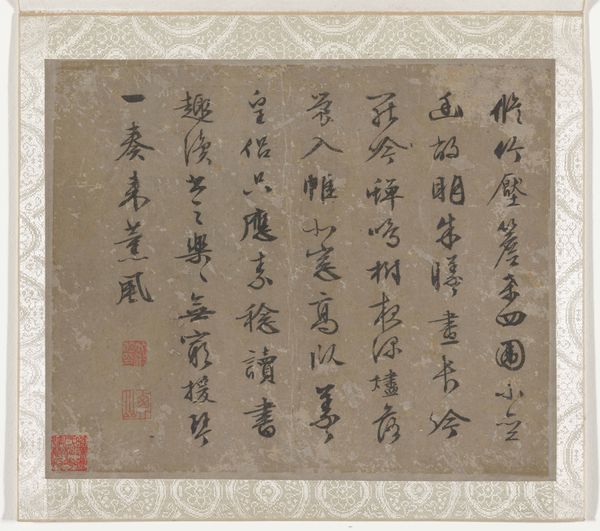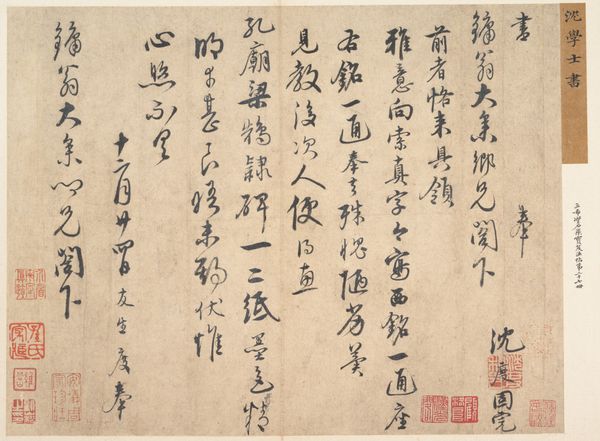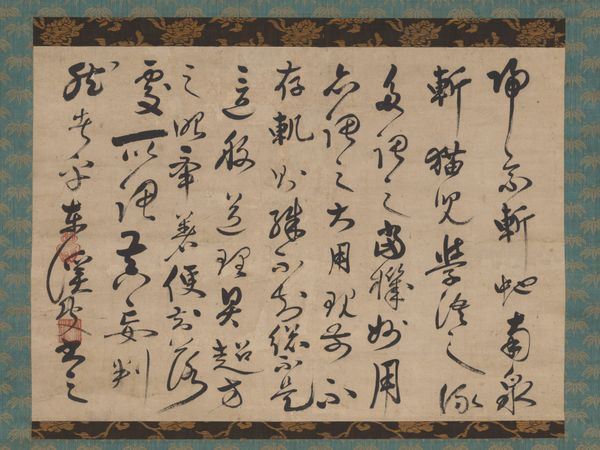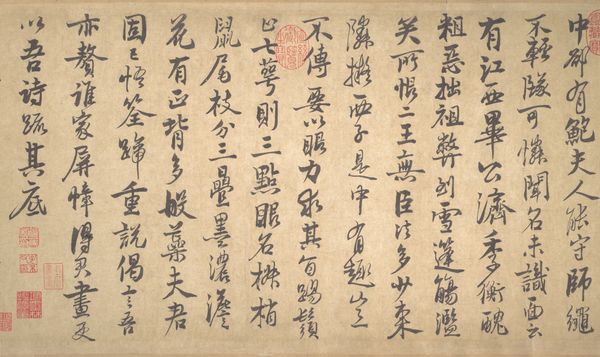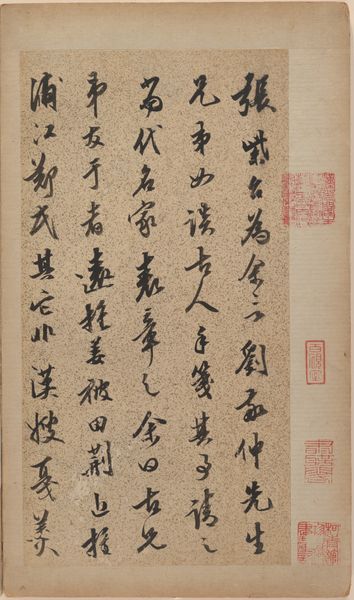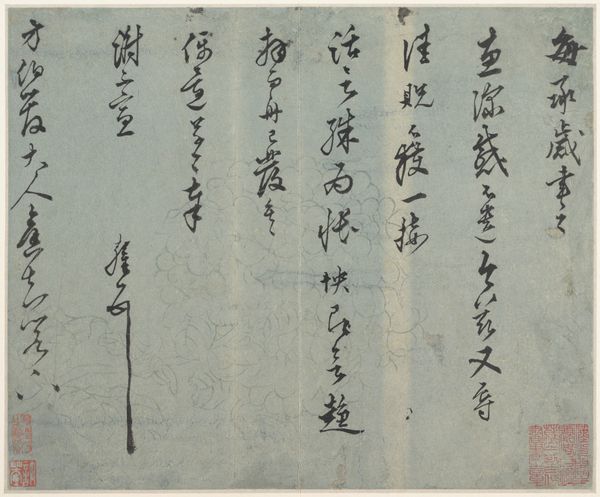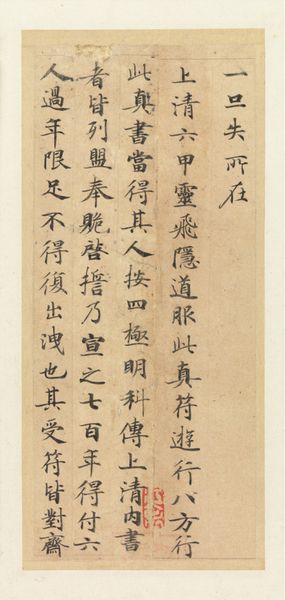
drawing, paper, ink-on-paper, ink
#
drawing
#
asian-art
#
paper
#
ink-on-paper
#
ink
#
calligraphy
Dimensions: 10 1/4 × 12 5/8 in. (26.04 × 32.07 cm) (image)12 3/4 × 14 1/4 in. (32.39 × 36.2 cm) (mount, bottom half of mount, from fold downward)
Copyright: Public Domain
Editor: This is Wen Zhengming's poem in running script from around the 16th century, created using ink on paper. Looking at the characters, their fluid strokes, and the overall composition, I get a sense of cultivated ease and almost meditative movement. What do you see in this piece? Curator: Beyond the aesthetic qualities, consider what calligraphy *represents* in Chinese culture. It’s not merely writing; it’s deeply intertwined with philosophical ideas, social status, and personal expression. Each stroke carries intention, mirroring the artist's inner landscape. Editor: So, the specific style of the running script is important? Curator: Absolutely. Running script, or 行書 (xíngshū), allows for a balance between legibility and artistic freedom. Unlike the more formal standard script, it encourages fluidity and spontaneity. Notice how the characters seem to flow into one another, suggesting a continuous stream of thought or emotion. How might this "stream" relate to the content of the poem itself? Editor: I suppose if the poem deals with natural scenery or personal feelings, that sense of flow would visually reinforce the meaning. Is that something viewers at the time would have picked up on? Curator: Precisely! Educated viewers were fluent in this visual language. They would appreciate not just the literal meaning of the words, but also the artist’s skill in conveying that meaning through the *qi*, the vital energy, embodied in the brushstrokes. They read into visual symbols with as much acuity as we read the text itself. Editor: I never thought about it that way. Now, seeing how intertwined the calligraphy is with the meaning of the poem itself, I’m even more impressed. It really emphasizes how cultural understanding changes the experience of art. Curator: Exactly, and these traditions remind us how deeply ingrained symbols are and continue to be in shaping our perceptions of artwork through history.
Comments
minneapolisinstituteofart about 2 years ago
⋮
During the Ming period, members of the elite who gained fame for their calligraphy were often equally famous for their achievements in painting. Within elite society, calligraphy was equally admired as painting. It was viewed as quintessential yet functional, rather than as merely an independent visual art form or means of self-expression and cultivation. Many artists in the Ming dynasty were not only good at painting, but also excelled in composing poems and calligraphy. These three arts are known as the sanjue, or the “Three Perfections.” Both Wen Zhengming and Zhu Yunming are regarded as great masters with skills of the “Three Perfections.”
Join the conversation
Join millions of artists and users on Artera today and experience the ultimate creative platform.


